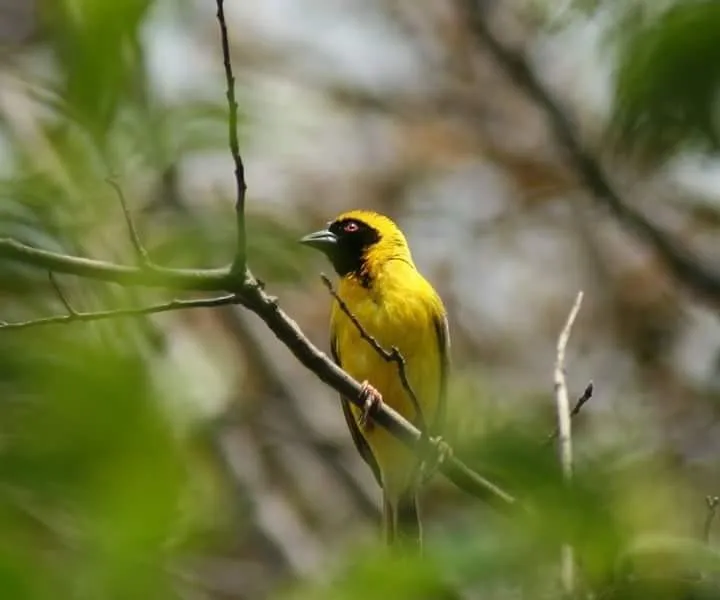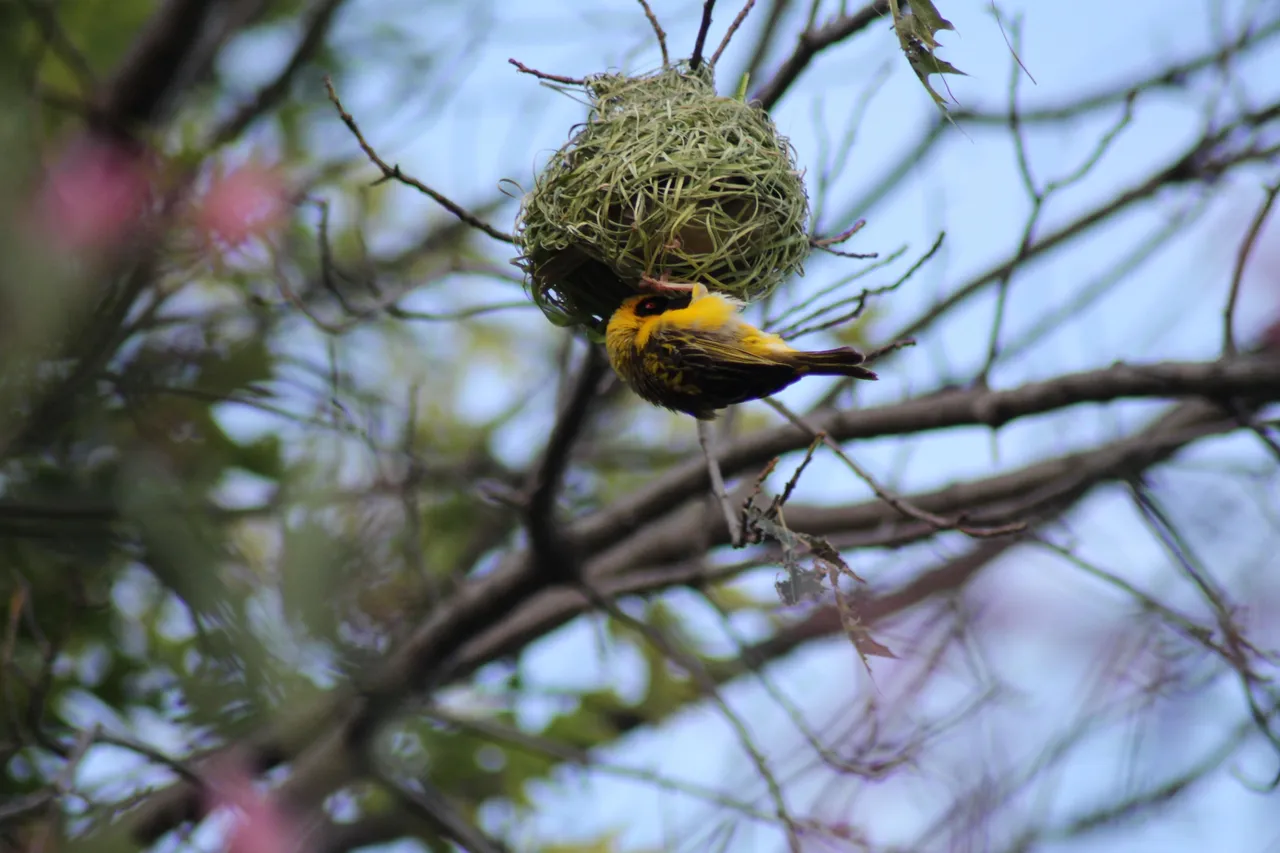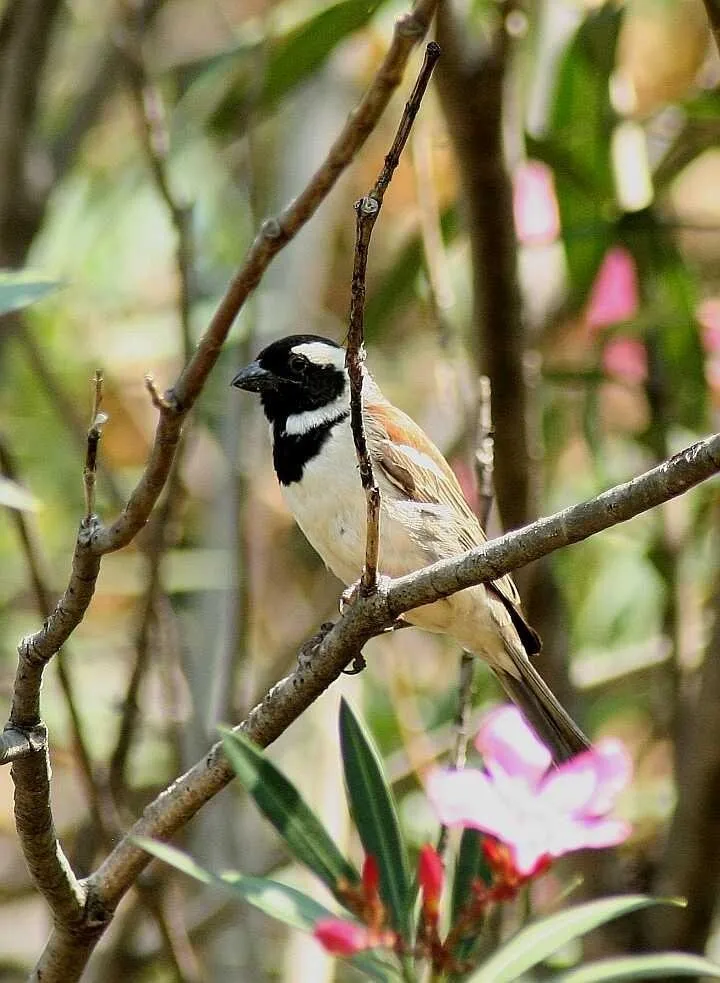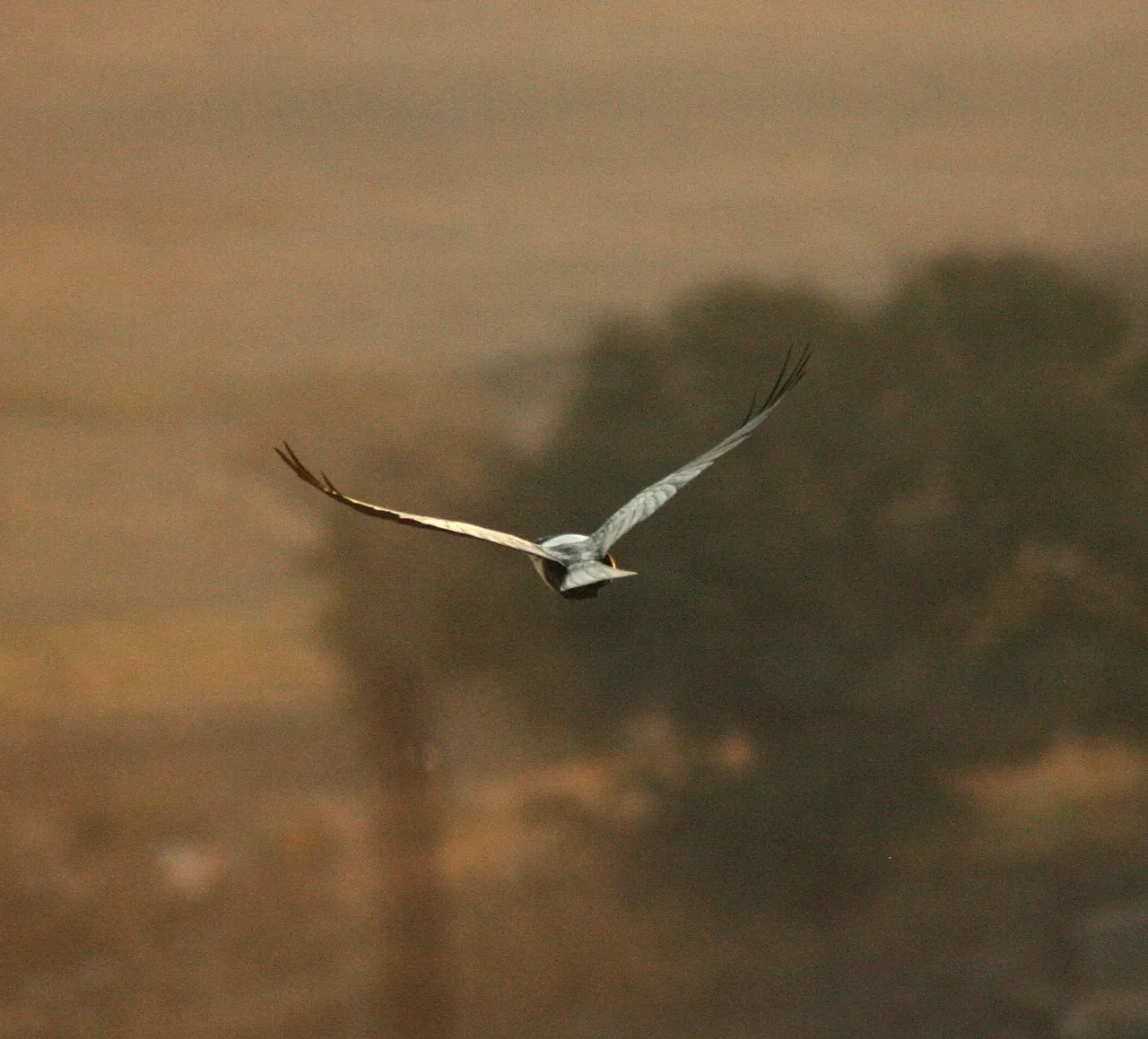Good day.
I have always been fascinated by birds and their freedom to fly wherever their hearts desire, therefore photographing them has become one of my many hobbies.
I have quite a few large trees growing in and around my yard which has allowed me the opportunity to admire and photograph many different bird species.
To capture the perfect photo of a bird either sitting on a branch, constructing a shelter or soaring high above your head you must pay attention to the birds behavior. When observing the bird you would like to photograph you'll soon notice there are certain habits that the bird has developed. He/she will either return to a specific branch to quickly scan the area for potential threats, or might even return to a specific tree for building materials. Once you've spotted a pattern it will be time to set up your gear.
The plan is to capture as much detail as possible, therefore it would be wise to invest in a good zoom lens. I would suggest a 200 or 300mm lens for birds that are closer to you and a 500 or 600mm lens for birds futher away. Both work well in their own way. Keep in mind that you want as much distance between you and the desired bird to prevent them from feeling threatened. Unless you've got a four leaf clover in your pocket you'll have to wait quite some time for the perfect shot. Find yourself a comfortable position in the shade if possible. Aim the camera at the location where you believe the bird will be passing by and be patient.
Birds can travel extremely fast. For example a simple homing pigeon can travel at speeds as fast as 177km/h ( 110mph ) or a Peregrine Falcon which holds the record for the fastest airspeed velocity can reach speeds of up to 320km/h (200 mph). With this in mind you want to try and use an extremely fast shutter speed to prevent any unwanted motion blur when capturing a bird in flight.
Perform a few test shots of the desired location beforehand as you might not have time to do so when the bird is in view, do all the necessary adjustments for focus and lighting. Once you feel ready with your setup wait for the bird and hopefully your dream shot.
I have set up a collection of all my favorite bird photos below with some settings and information. I hope that this will give you the necessary advice and inspiration for all your future bird photography projects.
 ISO: 100 S: 1/1000s F: 5.6
ISO: 100 S: 1/1000s F: 5.6
I have spotted this bird nesting in my yard for quite some time.
 100 S: 1/1000s F: 5.6
100 S: 1/1000s F: 5.6
The task of building a nest usually falls upon the male. In the case where the nest is not good enough the female will destroy the nest.
 ISO: 100 S: 1/1000s F5.6
ISO: 100 S: 1/1000s F5.6
It can be hard to spot certain species due to colours compared to their surroundings. This just makes capturing the photo so much more rewarding.
 ISO: 1600 S: 1/1600 F5.6
ISO: 1600 S: 1/1600 F5.6
I was lucky enough to capture this crow as it took flight into the sunset.
 ISO:200 S:1/500 F5.6
ISO:200 S:1/500 F5.6
This was my first successful photo of a bird and took me quite some time to capture. Trial and error is always the road to success.
 ISO:200 S: 1/4000 F:5.6
ISO:200 S: 1/4000 F:5.6
Photographers roaming the urban areas can still find a lot of good opportunities such as the one above. I captured this photo of what I believe to be a sparrow resting on the gutter of a hotel roof during a recent trip to the coast.
I hope you enjoyed this collection as much as I do and that you can draw some inspiration from it. Feel free to post some of your attempts in the comment section or any suggestions.
Thanks for your time.
Joshua Baxter.